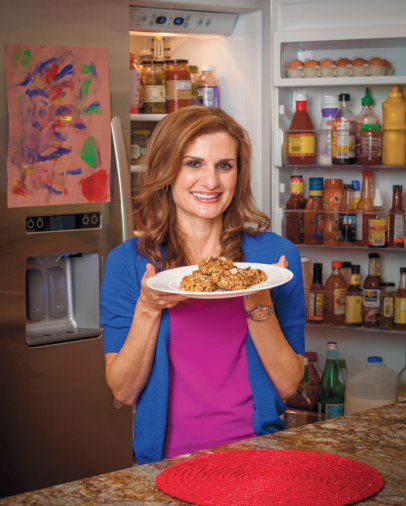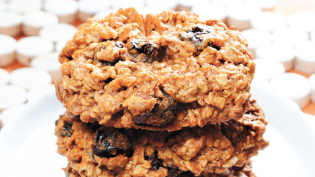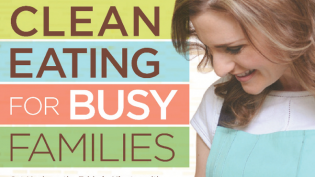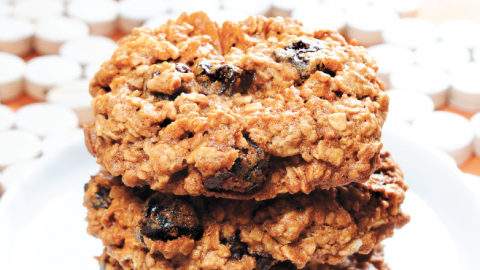New Cookbook Offers Nourishing Ideas for Busy Families
How many times have you come home from a long day of work and errands, stood in front of the open fridge and wondered what you were going to prepare for dinner? How often do you stop at a fast-food place on the way home from your kids' soccer practice?
You tell yourself it will be so much quicker to just get them burgers and fries than to make them wait, clamoring for something to eat, while you dice and chop your way to a healthy family dinner.
If you were already feeling a little guilty about that burger and fries dinner, these findings will most certainly persuade you that cooking and eating at home is a worthy activity:
• Experts tell us that kids who eat dinner at home with their families eat more fruits and veggies and drink less soda and eat fewer fried foods.
• Researchers report that teens who eat at home with their families get higher grades.
• If that isn't enough, studies also reveal that kids who share meals with their families suffer less depression, develop eating disorders less often and consider suicide less often.
You want to give your family – and yourself – healthier meals, but who has the time? First, there's the mental preparation: What will I cook? What do I have in the house? Do I have to stop to buy ingredients? Then there's the physical labor: Slicing, dicing, chopping, cooking and cleaning up.
Michelle Dudash, R.D., a Scottsdale-based registered dietitian with culinary training, understands your angst. Before her daughter, Scarlet, was born, Dudash was accustomed to cooking complex dinners with lots of ingredients and pans.
Dudash says, "After I gave birth to Scarlet, I was sleep-deprived and completely overwhelmed. I soon tired of Chinese take-out, frozen dinners and the same old recipes.
"One day I was trying to figure out what would be yummy, exciting and healthy for dinner. I thought of my stovetop chicken curry recipe, but that requires tending to. Instead, I decided to throw all of the ingredients into the slow cooker at once while Scarlet was napping. And it worked. The meal was delicious and pretty much trouble free."
Michelle's friends, most of whom are new mothers, also complained of their distress over wanting to provide home-cooked healthy meals for their families but feeling frazzled over time and their lack of kitchen skills.
That's when Dudash came up with the idea for a family cookbook. "I knew there were other moms out there like me. Plus, any mom I talked to who had tasted my food said, 'You need to write a cookbook!'"
And so she did. Her cookbook, Clean Eating for Busy Families (Fair Winds Press, 2012), offers tips for getting a quick, healthy meal on the table with recipes that are Mom-tested and kid-approved.
Dudash is eminently qualified to write about healthy food and to offer recommendations for preparing food since she has both a culinary arts degree and a degree in nutrition. As a registered dietitian she has counseled people about eating more healthfully and as a chef she's worked in restaurant kitchens and served as a culinary consultant and spokesperson for many food companies.
After culinary school, Michelle thought she wanted to open her own restaurant but she soon realized that the hours were not compatible with raising a family, so she turned instead to teaching people how to cook healthy quick meals. By the time Dudash got to work on the cookbook, she'd been cooking quick meals for her family for awhile so she already had a collection of recipes to start with.
Does she think first of nutrition or flavor when she conceptualizes a dish? Since she's a dietitian, I expected her to say that nutrition comes first. Her response was surprising. "Probably taste first," she said. It makes sense, however, when you realize that she relies mostly on fresh healthy ingredients so she doesn't have to worry too much about the nutritional profile of the dish.
Why "eating clean" instead of "healthy family cooking"? Because Dudash makes a point of avoiding most highly processed foods and instead concentrates on "foods closest to their natural state."
Standing in front of her open fridge, Dudash sees endless possibilities. It's because she's always got the basics on hand. She relies on a well-stocked pantry and fridge for "the peace of mind that I have an arsenal of staples on hand to accompany whatever fresh ingredients I buy."
Those staples include whole-grain pastas, rice and quinoa, dried fruits, pouches of salmon and tuna, canned and dried beans, canned tomato products, dried spices, canned low sodium broths and olive oil.
Even though Dudash avoids most processed foods, she knows that a quick meal often requires the use of some canned or frozen ingredients. She recommends that you shop carefully and read labels. "Instead of components that sound like things from lab experiments," she advises, "opt for foods with ingredients you find in home kitchens."
Dudash's recommendations for healthier eating are straightforward and easy to follow. Her recipes use common ingredients requiring very little special equipment. They're perfect for busy mothers and fathers who want to prepare quick, wholesome meals for their families.









